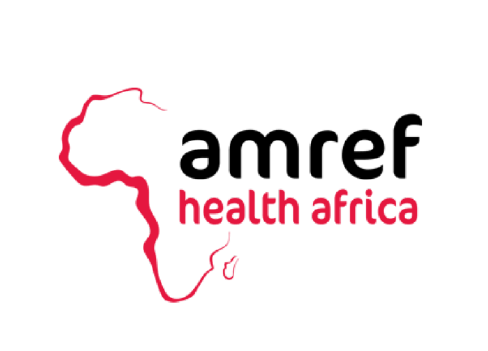Climbing Mount Kilimanjaro, the highest peak in Africa and one of the Seven Summits is a dream for many adventure seekers and mountain lovers. Standing at 5,895 meters (19,341 feet) above sea level, Kilimanjaro is a majestic sight that attracts thousands of climbers every year. But reaching the summit of this iconic mountain is not an easy feat. It requires careful preparation, physical fitness, mental strength, and a lot of determination.
In this guide, we will share with you some tips and tricks on how to climb Kilimanjaro successfully. Whether you are a beginner or an experienced climber, this guide will help you plan your Kilimanjaro safari adventure and make it a memorable one.
What is Kilimanjaro and why climb it?
Kilimanjaro is a dormant volcano located in Tanzania, near the border with Kenya. It is composed of three volcanic cones: Kibo, Mawenzi, and Shira. Kibo is the highest one and hosts the summit of Kilimanjaro, called Uhuru Peak. Uhuru means “freedom” in Swahili, the local language.
Kilimanjaro is famous for its snow-capped peak that contrasts with the surrounding savannah plains. It is also known for its diverse ecosystems, ranging from tropical rainforest to alpine desert. Climbing Kilimanjaro is like traveling from the equator to the poles in a matter of days.
Whatever your motivation is, climbing Kilimanjaro will be an unforgettable adventure that will reward you with amazing views, unforgettable memories, and a sense of accomplishment.
How to prepare for climbing Kilimanjaro
Climbing Kilimanjaro is not a technical climb, meaning you don’t need any special skills or equipment to do it. However, it is still a strenuous and demanding physical activity that requires a lot of preparation. Here are some aspects that you need to consider before embarking on your Kilimanjaro journey.
Physical training
One of the most important factors that will determine your success on Kilimanjaro is your physical fitness. You need to be in good shape and have enough stamina and endurance to walk for several hours a day, for several days in a row, at high altitude.
The best way to train for Kilimanjaro is to do aerobic exercises that increase your cardiovascular capacity and strengthen your muscles. Some examples are running, cycling, swimming, hiking, or stair climbing. You should aim to exercise at least three times a week, for at least an hour each time, for at least three months before your climb.
You should also try to simulate the conditions of climbing Kilimanjaro as much as possible. This means wearing your hiking boots and backpack, carrying some weight (10-15 kg), walking on uneven terrain or uphill, and exposing yourself to different weather conditions. If possible, you should also do some hikes at higher altitudes to get used to the lower oxygen levels.
Mental preparation
Besides physical fitness, you also need to have a strong mental attitude to climb Kilimanjaro. You will face many challenges and difficulties along the way, such as fatigue, cold, boredom, frustration, or fear. You need to be mentally prepared to overcome these obstacles and keep your motivation and morale high.
Some ways to prepare yourself mentally are:
- Setting realistic and achievable goals
- Doing some research and learning about the mountain and the climb
- Visualizing yourself reaching the summit and enjoying the view
- Having a positive and optimistic mindset
- Practicing some relaxation techniques, such as breathing exercises, meditation, or yoga
- Seeking support and encouragement from your friends, family, or fellow climbers
Choosing the Right Tour Guide and Operator
Climbing Kilimanjaro is not something that you can do on your own. You need to hire a licensed and reputable tour operator that will provide you with a professional and experienced guide, as well as porters, cooks, and other support staff. Your tour operator will also arrange your transportation, accommodation, food, water, and equipment for the climb.
Choosing the right tour operator and guide is crucial for your safety, comfort, and enjoyment on Kilimanjaro. You want to make sure that they have a good reputation, a high success rate, a fair price, a responsible attitude towards the environment and the local community, and a good rapport with you.
At African Paradise Adventures, we are connected to the environment and communities of Tanzania. Not only do we work here, but we also raise our families here. We have more than 100 experienced safari guides and climbing specialists, with good command of English, French, German, and Spanish, all trained with evacuation and rescue skills.
Picking the best route and season
Another important decision that you need to make before climbing Kilimanjaro is which route and season to choose. The best season to climb Kilimanjaro is during the dry months of January to March and June to October. There are several routes that lead to the summit of Kilimanjaro, each with its own advantages and disadvantages. The main factors that you need to consider when choosing a route are:
- The difficulty level: Some routes are more challenging than others, depending on the distance, elevation gain, terrain, and exposure.
- The duration: Some routes are shorter than others, ranging from five to nine days. The longer the route, the better the acclimatization, but also the higher the cost and the physical demand.
- The scenery: Some routes are more scenic than others, offering different views of the mountain and its surroundings.
- The crowd: Some routes are more popular than others, meaning they can be more crowded or more quiet.
The most common routes on Kilimanjaro are:
- Marangu: The oldest and easiest route on Kilimanjaro. It is also the only route that offers hut accommodation instead of camping. It takes five or six days to complete. It has a low success rate due to poor acclimatization. It is also known as the “Coca-Cola” route because of its popularity.
- Machame: The most popular route on Kilimanjaro. It is also one of the most scenic routes, offering diverse landscapes and views. It takes six or seven days to complete. It has a high success rate due to good acclimatization. It is also known as the “Whiskey” route because of its difficulty.
- Lemosho: The most beautiful route on Kilimanjaro. It is also one of the longest and most remote routes, offering a great wilderness experience. It takes seven or eight days to complete. It has a very high success rate due to excellent acclimatization.
- Rongai: The only route that approaches Kilimanjaro from the north side. It is also one of the easiest and least crowded routes, offering a more authentic African experience. It takes six or seven days to complete. It has a moderate success rate due to average acclimatization.
- Shira: A variation of the Lemosho route that starts at a higher altitude on the Shira Plateau. It is also one of the most scenic routes, offering spectacular views of the mountain. It takes seven or eight days to complete. It has a high success rate due to good acclimatization.
If you’re searching for more information on trekking Kilimanjaro, please see our FAQ, and many other resources.
At African Paradise Adventures, we pride ourselves on providing all the proper resources so that our clients can more fully experience and appreciate affordable East Africa safari tours & Holiday packages that range from bucket-list adventures to ultra-luxurious vacations. We offer diverse safari destinations, the best prices, and customized African safaris that serve your unique needs.
Don’t hesitate – book your African adventure today!






